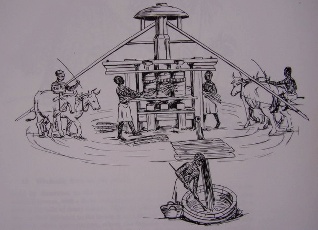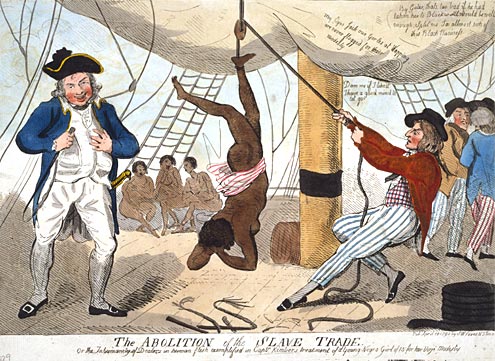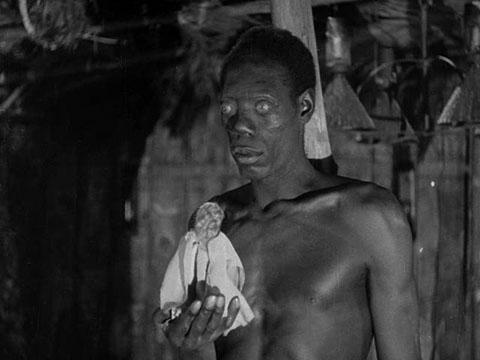As this blog has
discussed many times before, pirates stole not only gold and silver, but
shipments of merchant goods as well. Of course, they chose the most valuable
goods on a captured ship, and one of the most valuable trade goods was sugar.
Sugar was not native to
the New World. It had been domesticated, probably in New Guinea about ten
thousand years ago. Trade in sugar quickly moved to Southeast Asia and China,
and then to India, where people first discovered how to make the kind of granulated
sugar that we buy in the store today. (Before this, people had just chewed on
the stalks of sugar cane, enjoying the sweet juice.)
Trade with the Arabs
brought the sweet stuff to Europe, but sugar did not grow well in the European
climate. Demand for sugar was high, however, so Christopher Columbus carried
cuttings of sugar cane with him on his second voyage. The plants flourished in
the tropical climate of Hispaniola, and sugar became part of the Caribbean
landscape.

Sugar cane is a tall,
grass-like plant that looks similar to bamboo. It has shallow roots, and long,
flat green leaves with a serrated edge. During our time period, sugar cane was
cultivated and harvested by hand, the harvesting done with machetes. The cane
stalks were then stripped of their leaves and rough chopped, and the cane
stalks were put into a mill.

The mill used a stone
wheel, driven either by harnessed animals or by slave labor, which crushed the
stalks. This released the sweet sugar sap, which was drained, collected, refined
and boiled until the water evaporated and it became crystallized sugar.
Sugar refining has
progressed over the years, and the product produced during the Golden Age of
Piracy was a slightly sticky product, pale, but not as white as today’s sugar.
Nevertheless, it was called “white gold” and quickly became the source of
enormous profit.

Today, the average
American eats an average of 100 pounds of sugar a year. In 1700, the average
was closer to 4 pounds per year. But this was very much stratified by income. A
single pound of sugar cost as much a laborer made in two days. Archeologists
can determine the income level of bodies from the early 1700’s by looking at
the teeth. Sugar consumption meant that the bodies of the rich had badly
decomposed teeth. Poor people (like pirates) had healthy, white teeth in
comparison.
The problem was that no
sane person wanted to cultivate sugar cane. Because only the juice was used
from the plant, vast fields were needed to produce a profit. Because heavy
equipment was needed to extract the juice and refine it, it was a rich person’s
game. And the work of growing and harvesting the cane was brutal.

The tall cane stalks
provided little shade for workers, while blocking any available breeze. Cane
leaves were sharp on the edges, and cut the skin. The labor of cutting the
stalks, stripping the leaves and carrying stalks to the grinder was exhausting.
And the boiling kettles, often in the open under a tropical sun, produced
killing temperatures.
Small family farms simply
could not do this. So, large plantations, powered by slaves, became the norm.
Barbados was the most valuable colony in the English empire because of its
sugar production, and as sugar spread, the slave society grew with it.

In the very early days,
slaves were often Irish rebels, or poor British citizens, transported to the
Caribbean because of minor crimes. But these people simply could not stand the
heat and the sun. (Remember, sunblock would not be invented until 1936.) Plantation
owners quickly switched to kidnapped Africans, who worked 18 hours a day in the
cane fields. It is estimated that the average life expectancy of a slave in the
cane field was two years.
The plantation owners, surrounded
and outnumbered by slaves, were constantly nervous. They feared slave
uprisings, and demanded armed support from the government. This in turn
supported the militarization of the English colonies.
The slaves, meanwhile,
worked to death, created horror stories in which dead slaves were raised to
work on after they had been laid to rest. These “zombies” still permeate modern
mythology.
 |
| Undead worker from a movie "The White Zombie" 1932 |
Sugar, as a luxury item,
was also heavily taxed. England valued its sugar-producing colonies more than
its mainland colonies because of the income they produced. It’s even been
argued that England didn’t put its full effort behind fighting the American
Revolution because they were busy defending Barbados from smugglers and
pirates.
Pirates probably ate the
sugar that they captured, but recipes containing sugar were still somewhat
rare. Cany usually consisted of seeds or small fruits dipped in sugar and dried. Sugar was consumed in tea and coffee. Jams and jellies – fruit preserved
by sugar – was just becoming popular, but pirates probably didn’t have the
means to create these, and would have just consumed any such products they
captured.

Rum and sugar production
go hand in hand, since rum is made of the waste products of the sugar
manufacturing industry. Molasses – unrefined sugar cane juice – is fermented
into rum. In approximately our period
(about 1700) Barbados alone was producing approximately 467,000 gallons of rum
a year.
So that’s the basic
situation. Pirates drank rum produced by sugar producers, captured ships laden
with sugar and sold the sugar at a discount to merchants who had a ready market
for it. Slaves – either escaped from sugar plantations or liberated by pirates
from captured ships swelled the ranks of the pirates, and pirates dined in fine
style on sugar products. In some instances, pirates even supported slave
uprisings on sugar plantations.

The situation in which a few lucky individuals owned most of the resources, and the vast majority of people owned little or nothing fueled the fires of piracy and stirred men into desperate rebellion. Sugar shaped the
Caribbean, and the Caribbean shaped the pirates.
This blog is great! I'm writing a book about pirates in a Fantasy world right now and learning what pirates actually did is helping alot. Thanks!
ReplyDeleteHello Everybody,
ReplyDeleteMy name is Ahmad Asnul Brunei, I contacted Mr Osman Loan Firm for a business loan amount of $250,000, Then i was told about the step of approving my requested loan amount, after taking the risk again because i was so much desperate of setting up a business to my greatest surprise, the loan amount was credited to my bank account within 24 banking hours without any stress of getting my loan. I was surprise because i was first fall a victim of scam! If you are interested of securing any loan amount & you are located in any country, I'll advise you can contact Mr Osman Loan Firm via email osmanloanserves@gmail.com
LOAN APPLICATION INFORMATION FORM
First name......
Middle name.....
2) Gender:.........
3) Loan Amount Needed:.........
4) Loan Duration:.........
5) Country:.........
6) Home Address:.........
7) Mobile Number:.........
8) Email address..........
9) Monthly Income:.....................
10) Occupation:...........................
11)Which site did you here about us.....................
Thanks and Best Regards.
Derek Email osmanloanserves@gmail.com
This article is very helpful in enhancing our knowledge. Ecolo is providing the エコストロー that can reduce the environmental pollution.
ReplyDeleten n n n n n n n n n n n n n n n n n n n n n n n n n n n n n n n n n n n n n n n n n n n n n n n n n n n n n n n n n n n n n n n nn n n n n n n n n n n n n n n n nn n n n n n n n n n n n n n n n n n n n n n n n n n n n n nn n n n n n n n n n n n n n n n n n nn n n nn n n n n n n n n n nn nn nn n n n n nn n n n n n n n n nn n n n n nnnm
ReplyDeleteGreat and that i have a neat offer you: Where Do You Get The Money To Renovate A House home remodeling companies near me
ReplyDelete